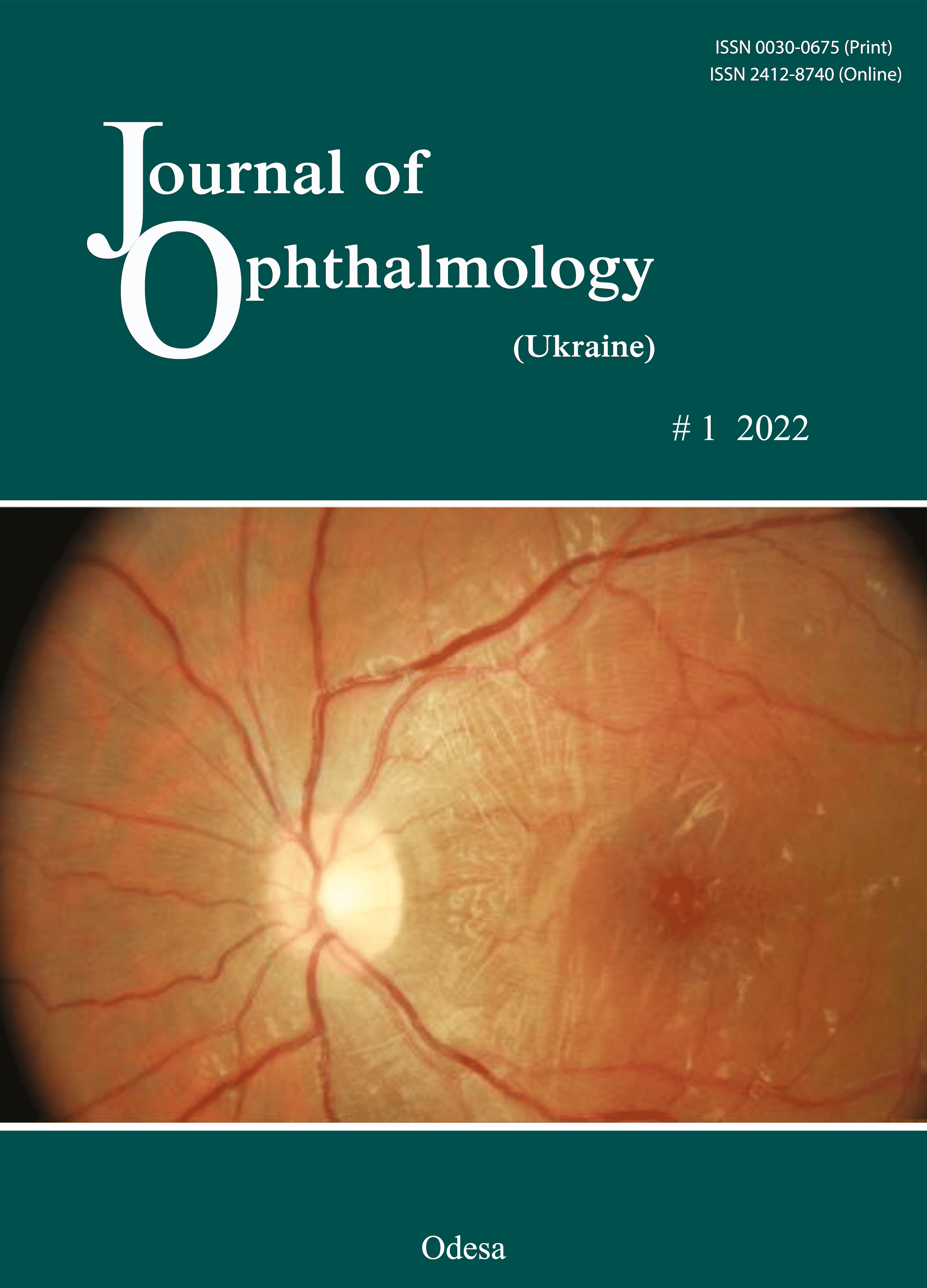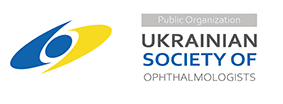Changes in the quantitative characteristics of the Ukrainian market of tear replacement products for dry eye disease over 2016-2019
DOI:
https://doi.org/10.31288/oftalmolzh202215862Keywords:
tear replacement products, dry eye syndrome, retail sales, price nichesAbstract
Background: Management of dry eye syndrome (DES) is a current medical, pharmaceutical and social issue both globally and in Ukraine.
Purpose: To assess changes in quantitative characteristics of the Ukrainian market of tear replacement products (TRPs) for dry eye disease over 2016-2019.
Material and Methods: Data from the national pharmacy-related registers and from PharmXplorer, a marketing research database from Proxima Research LLC, were used for research. Sales were assessed in terms of both packages and Ukrainian hryvnias (₴). Retrospective, structural and graphical methods were used for research.
Results: Of the TRPs available on the market, only 10.7% were Ukrainian products. Almost half (46.43%) of the TRPs were those whose price range was from ₴101 to ₴200. The smallest share of the market (14.28%) was attributed to the most expensive TRPs. In addition, almost half of the products of the lowest price range (₴100 and under) were domestic products.
Conclusion: the number of domestic TRPs in the Ukrainian pharmaceutical market is limited. A stable increase in TRP retail sales both in packages and hryvnias indicates a stable and positive increase in demand for therapeutic products for dry eye patients. A Ukrainian lowest-price niche medical device containing both dexpanthenol and taurin was an absolute leader of 2016-2019 TRP retail sales.
References
1.[Dry eye syndrome. Evidence-based clinical guidance]. [Internet]; 2019. Ukrainian. Available from: https://www.dec.gov.ua/wp-content/uploads/2019/11/2019_10_02_kn_syndrom_.
2.Stapleton F, Alves M, Bunya VY, Jalbert I, Lekhanont K, Malet F, et al. TFOS DEWS II epidemiology report. Ocul Surf. 2017;15:334-65. https://doi.org/10.1016/j.jtos.2017.05.003
3.Craig JP, Nelson JD, Azar DT, Belmonte C, Bron AJ, Chauhan SK, et al. TFOS DEWS II Report Executive Summary. Ocul Surf. 2017 Oct;15(4):802-12. https://doi.org/10.1016/j.jtos.2017.08.003
4.Bron AJ, de Paiva CS, Chauhan SK, Bonini S, Gabison EE, Jain S, et al. TFOS DEWS II pathophysiology report. Ocul Surf. 2017;15:438-510. https://doi.org/10.1016/j.jtos.2017.05.011
5.Craig JP, Nichols KK, Akpek EK, Caffery B, DuaHS, Joo CK, et al. TFOS DEWS II definition and classification report. Ocul Surf. 2017;15:276-83. https://doi.org/10.1016/j.jtos.2017.05.008
6.The management of dry eye. Drug Ther Bull. 2016;54(1):9-12. https://doi.org/10.1136/dtb.2016.1.0378
7.Jones L, Downie LE, Korb D, Benitez-del-Castillo JM, Dana R, Deng SX, et al. TFOS DEWS II management and therapy report. Ocul Surf. 2017;15:575-628. https://doi.org/10.1016/j.jtos.2017.05.006
8.Willcox MDP, Argüeso P, Georgiev G, Holopainen J, Laurie G, Millar T, et al. TFOS DEWS II tear film report. Ocul Surf. 2017;15:366-403. https://doi.org/10.1016/j.jtos.2017.03.006
9.Friedman NJ. Impact of dry eye disease and treatment on quality of life. Current Opinion in Ophthalmology. 2010;21(4):310-6. https://doi.org/10.1097/ICU.0b013e32833a8c15
10.Alves M, Fonseca EC, Alves MF, Malki LT, Arruda GV, Reinach PS, et al. Dry eye disease treatment: a systematic review of published trials and a critical appraisal of therapeutic strategies. Ocul Surf. 2013;11(3):181-92. https://doi.org/10.1016/j.jtos.2013.02.002
11.Wolffsohn JS, Arita R, Chalmers R, Djalilian A, Dogru M, Dumbleton K, et al. TFOS DEWS II diagnostic methodology report. Ocul Surf. 2017;15:539-74. https://doi.org/10.1016/j.jtos.2017.05.001
12.Dogru M, Tsubota K. Pharmacotherapy of dry eye. Expert Opin Pharmacother. 2011 Feb;12(3):325-34. https://doi.org/10.1517/14656566.2010.518612
13.Pucker AD, Ng SM, Nichols JJ. Over the counter (OTC) artificial tear drops for dry eye syndrome. Cochrane Database Systematic Rev. 2016 Feb 23;2:CD009729. https://doi.org/10.1002/14651858.CD009729.pub2
14.U.S. Food, Drug Administration. Ophthalmic drug products for over‐the‐counter human use. www.accessdata.fda.gov/scripts/cdrh/cfdocs/cfcfr/CFRSearch.cfm?CFRPart=3... (accessed 26 August 2015).
15.Rodríguez-Pomar C, Pintor J, Colligris B, Carracedo G. Therapeutic inhibitors for the treatment of dry eye syndrome. Expert Opin Pharmacother. 2017 Dec;18(17):1855-1865. https://doi.org/10.1080/14656566.2017.1403584
16.Lee SY, Tong L. Lipid-containing lubricants for dry eye: a systematic review. Optom Vis Sci. 2012;89(11):1654-1661. https://doi.org/10.1097/OPX.0b013e31826f32e0
17.Çakır B, Doğan E, Çelik E, Babashli T, Uçak T, Alagöz G. Effects of artificial tear treatment on corneal epithelial thickness and corneal topography findings in dry eye patients. J Fr Ophtalmol. 2018 May;41(5):407-411. doi: 10.1016/j.jfo.2017.06.032. PMID: 29776765. https://doi.org/10.1016/j.jfo.2017.06.032
18.Lemp MA, Bron AJ, Baudouin C, et al. Tear osmolarity in the diagnosis and management of dry eyedisease. Am J Ophthalmol. 2011;151(5):792-8. https://doi.org/10.1016/j.ajo.2010.10.032
19.Kryvoviaz OV, Tomashevska YuO. [Remedies for substitution therapy of the dry eye syndrome: analysis of the pharmaceutical market of Ukraine]. Pharmaceutical Review. 2019; 4, 37-44. Ukrainian.
20.[State Register of Medicines of Ukraine (2019)]. Available from: http://www.drlz.com.ua/ibp/ddsite.nsf/all/shlist?opendocument. Ukrainian.
21.[State Register of Medical Equipment and Medical Devices (2019)]. Available from: https://mozdocs.kiev.ua/medvyrob.php. Ukrainian.
22.Pharmxplorer. Proxima Research. 2012. Available from: http://www.pharmxplorer.com.ua. [Last accessed on 2020 Oct 01].
23.Tomashevska YuO, Kryvoviaz OV. Ensuring the sterility of substitution therapy medications for dry-eye syndrome treatment after opening the original packaging. Scientific journal of Polonia university. 2021;44(2021) nr 1:278-283. https://doi.org/10.23856/4433
Downloads
Published
How to Cite
Issue
Section
License
Copyright (c) 2025 В. М. Сакович, Ю. О. Томашевська, О. В. Макаренко, О. В. Кривов'яз, М. С. Гарник

This work is licensed under a Creative Commons Attribution 4.0 International License.
This work is licensed under a Creative Commons Attribution 4.0 International (CC BY 4.0) that allows users to read, download, copy, distribute, print, search, or link to the full texts of the articles, or use them for any other lawful purpose, without asking prior permission from the publisher or the author as long as they cite the source.
COPYRIGHT NOTICE
Authors who publish in this journal agree to the following terms:
- Authors hold copyright immediately after publication of their works and retain publishing rights without any restrictions.
- The copyright commencement date complies the publication date of the issue, where the article is included in.
DEPOSIT POLICY
- Authors are permitted and encouraged to post their work online (e.g., in institutional repositories or on their website) during the editorial process, as it can lead to productive exchanges, as well as earlier and greater citation of published work.
- Authors are able to enter into separate, additional contractual arrangements for the non-exclusive distribution of the journal's published version of the work with an acknowledgement of its initial publication in this journal.
- Post-print (post-refereeing manuscript version) and publisher's PDF-version self-archiving is allowed.
- Archiving the pre-print (pre-refereeing manuscript version) not allowed.












